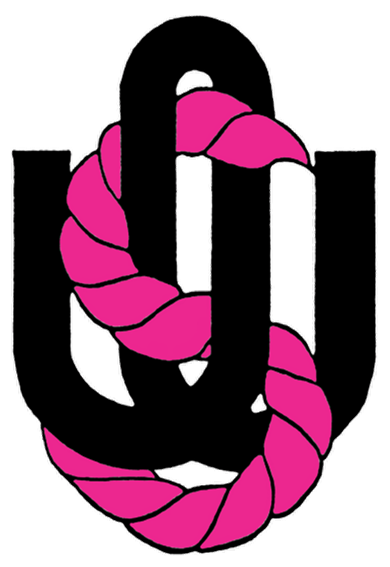Sunday Seminars
| |
Past Seminars 2022
| |
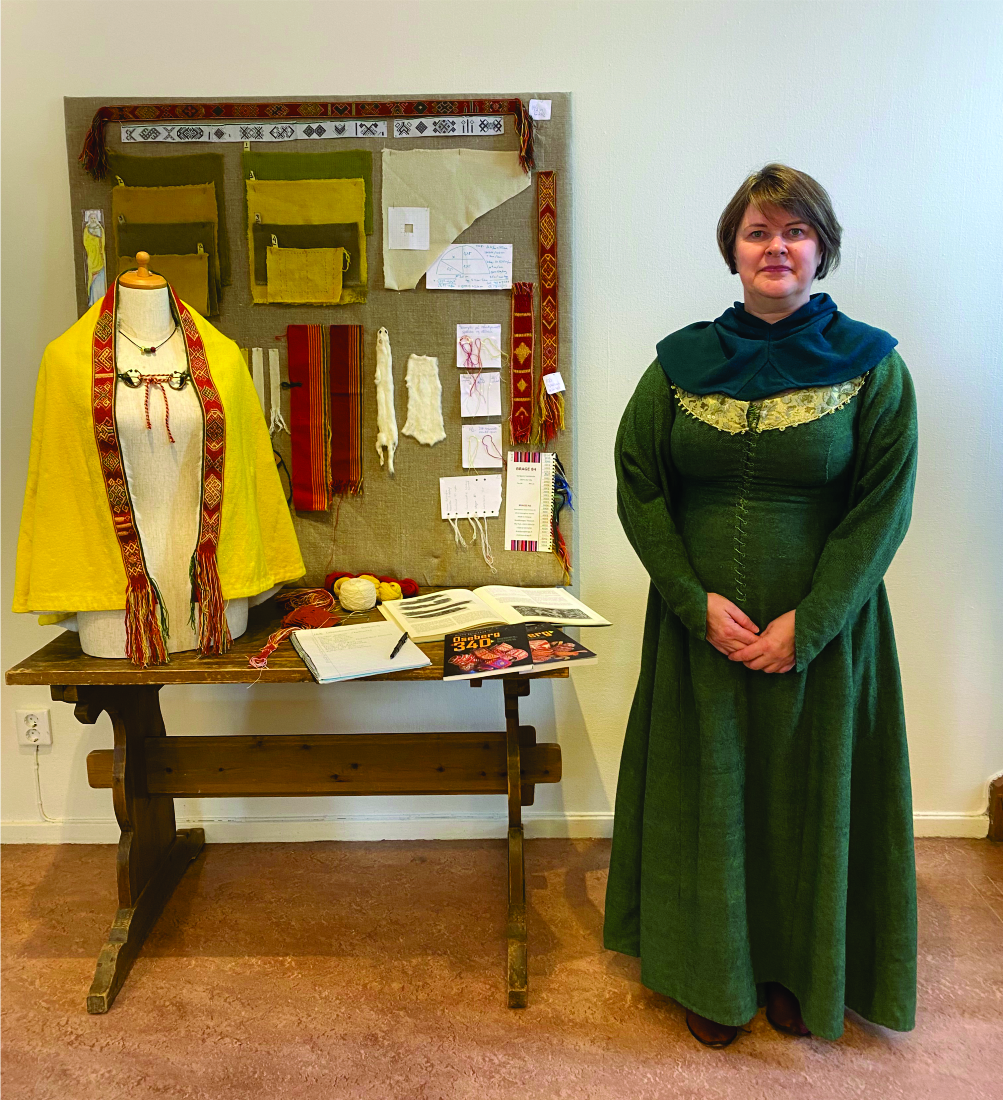
Kirsi Manni ~ January 16, 2022 ~ Leksand Cape
Welcome to join me on the journey to recreate a women's cape from the 12th century. In 1971 a unique textile find was made during excavations at my local church, the fragile remnants of a woolen garment were transported to the Swedish History Museum and examined. The report of the examination was published in a book covering Leksand Church History over 1000 years, in Swedish. The research and reconstruction is based on the original report in the book and studies of the extant fragments now kept in the museum magazines. The cape has never been exhibited due to its fragile condition. For the first time in 800 years we can catch a glimpse of what it might have looked like as new.
The tablet woven border is unique in design and technique, my limited knowledge in bandweaving was not enough to decipher the code. I found an experienced tablet weaver in Norway, Bente Asgaard. She has not only reconstructed the patterns but also a lost bandweaving technique.
This seminar is for handweavers and the historically interested.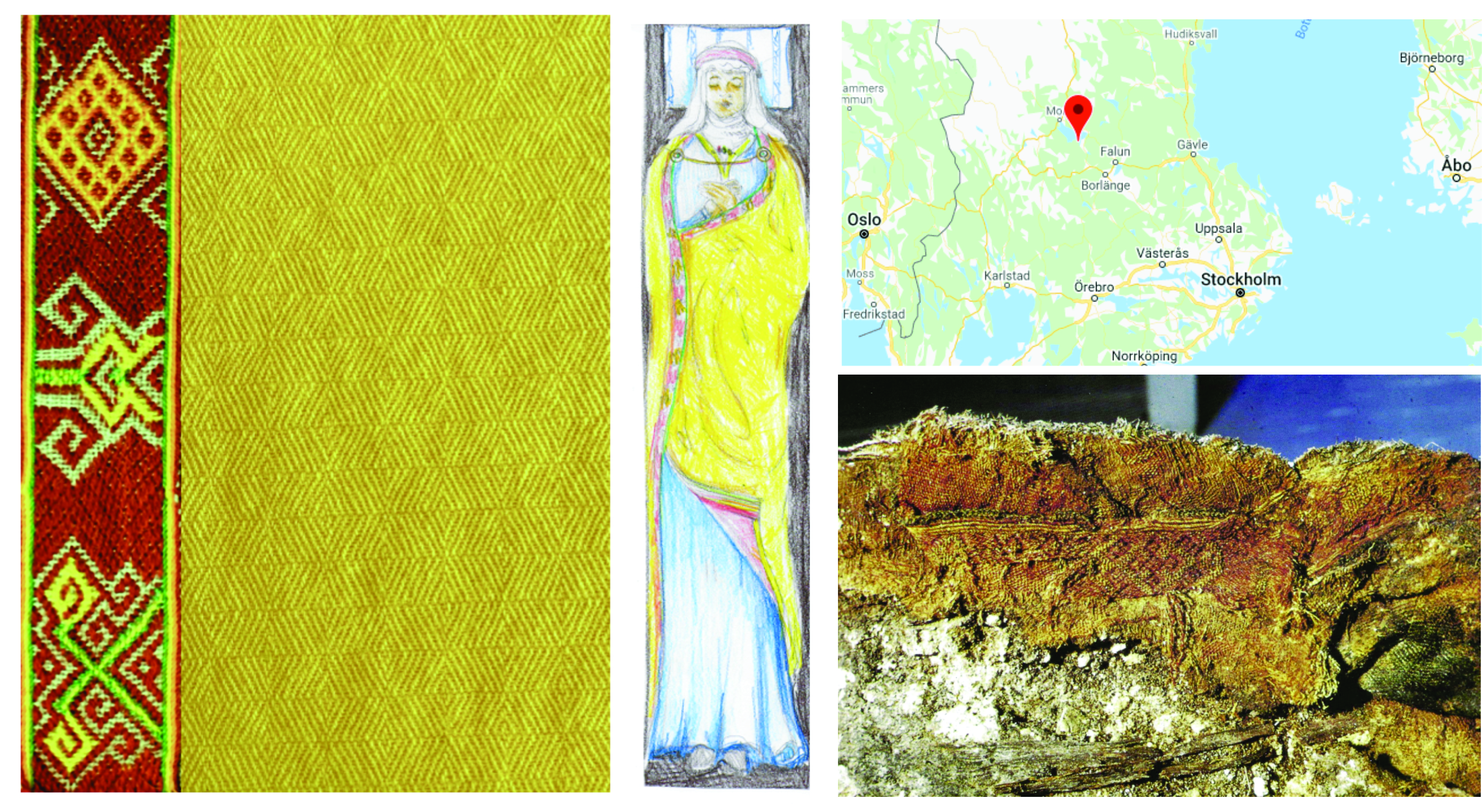
Bio ~ Kirsi Manni
I´m a Handweaver in 3rd generation and teacher with a Bachelor in Textiles, Handweaving and Maths Education.
Handweaving has a deep rooted tradition in Sweden. With a grandmother and mother that always had hands busy with creating, I grew up under looms and sewing machines until tall enough to reach the pedals. Textiles have formed my life and livelihood and I´m passionate about sharing my love and inspiring others. I am the owner of Scandinavia's first SAORI studio. I also do conservation work and teach traditional crafts like band weaving.
Textiles unites humanity and whether I visit a crafter in a village in Tanzania, Cambodia or Peru, we share the common language of fiber-arts.
That connection extends into history and the study and recreation of historical textiles almost makes the thoughts and decisions of the long past makers tangible. As makers we are connected over continents and time, and learning from each other.
Kirsi's seminar will be recorded and be made available for one month to those that have registered.
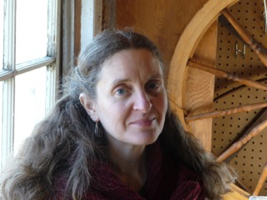
Melissa Weaver Dunning ~ February 20, 2022 ~ Shaker Textiles
Many are familiar with Shaker chairs or buildings, but the Shakers also applied their fundamental principles of utility, simplicity and proportion to textiles. They are known for weaving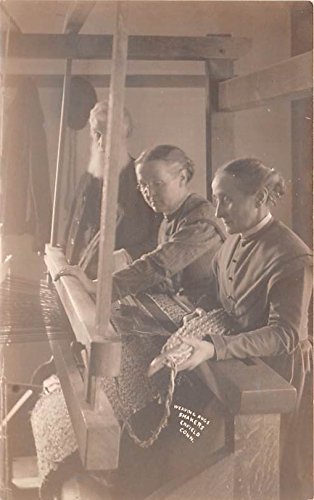
poplar strips into cloth for baskets, bonnets and fans, utilitarian cloth for their own use, heavy fulled wool fabric for the Dorothy cloaks they wore and sold, and simple but unique rag rugs that still delight hand weavers today. We will examine tools and textile s from three Shaker museums, with a special focus on the unique aspects of Shaker weaving.
This will be an entertaining as well as edifying slide lecture showing textiles and tools from three Shaker museums and describing some of the unique aspects of Shaker weaving.
Bio ~ Melissa Weaver Dunning
Melissa is a singer of traditional ballads specializing in the music of Ireland, England and Scotland; her powerful and clear unaccompanied singing brings the old story songs to life and weaves vibrant pictures of life in another age. Melissa is also a traditional hand-weaver working on antique equipment to produce 18th and 19th century style textiles. She has had the great good fortune to study with Scottish master weaver and singer Norman Kennedy
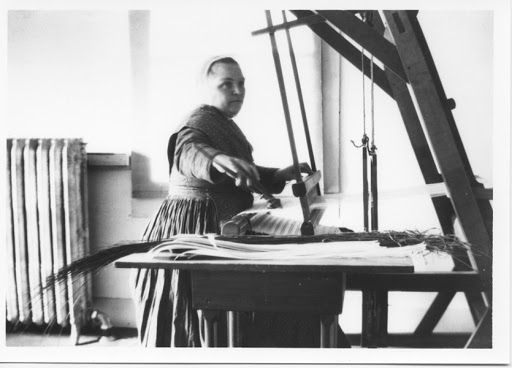
since 1980. She is dedicated to carrying on some of the wealth of tradition gleaned from this apprenticeship both in weaving and in music. is an avid tartan & linen weaver, a skilled spinner and a compulsive knitter. She loves to share the history and context of traditional textile arts and to pass on the efficient techniques of time-honored skills. Melissa lives in the beautiful Shenandoah Valley of Virginia.
Melissa's seminar will be recorded and be made available for one month to those that have registered.
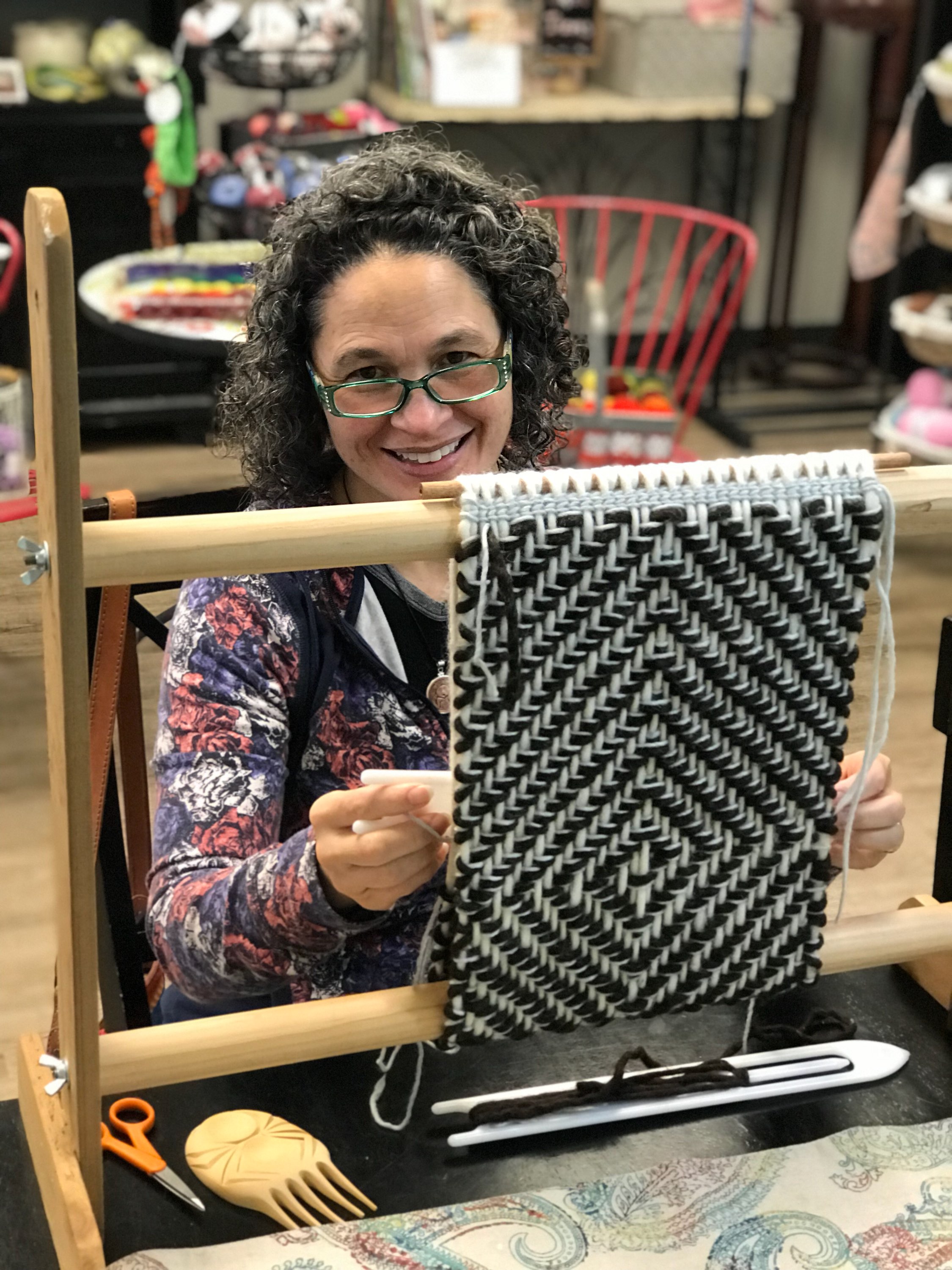
Dr. Susan Pavel ~ March 20, 2022 ~ Salish Textiles
I first and foremost weave for ceremonial reasons, both when the spirit moves me and when an occasion such as a naming, wedding, birth, death, and life passage arises. I create educational exhibits in community spaces because I strongly believe in instructing the public. When we observe and participate, we appreciate the weaving and culture much more. I weave, because I was entrusted with the sacred obligation to pass on the teachings to our next generations, resulting in classes and presentations. I exhibit, the weaving as an art form to share the deeply woven beauty that is the Coast Salish. Above and beyond the “I”, WE weave because we honor sQeLsyayay ~ Weaver’s Spirit Power.
Bio ~ Dr. Susan Pavel PhD saOamitCa - Dr. Susan Pavel, Filipina by birth, first learned Coast Salish wool weaving during the summer of 1996. Her master teacher was subiyay - Bruce Miller of the Skokomish Nation, Uncle to her husband CiXapqid – Michael Pavel.
Each summer she would take three full months to produce one ceremonial blanket and then gift it to various elders of the tribe. By the fourth year it was suggested to sell her creations as an exchange of gifts and she started along that path. By the seventh year she was invited to teach weaving classes for other Nations and has taught hundreds of students. She has curated, participated, and solo exhibited in 12 museum exhibits and over 25 gallery exhibits. She has been awarded 17 artist-in-residence or grant opportunities. She has over 30 bibliographic acknowledgements. She has consistently taught, presented, and/or demonstrated at least 80 times. Her weavings can be seen in 10 public venues and numerous private collections across the nation. She currently serves as the Executive Director of the Coast Salish Wool Weaving Center. As well as an adjunct faculty member at The Evergreen State College. Today she continues to weave and teach, as she is obedient to sQeLsyayay – Weaver’s Spirit Power.

Susan's seminar will be recorded and be made available for one month to those that have registered.
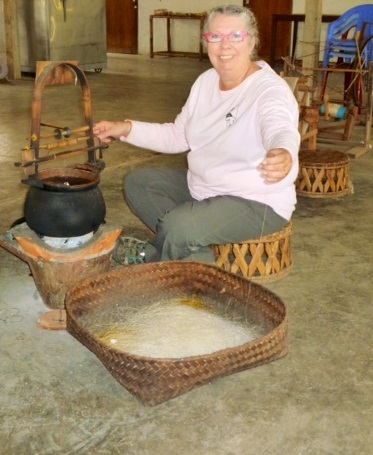
Coleen Nimetz ~ April 10, 2022 ~ Adventures of a Cowichan Valley Silk Farmer
Coleen’s presentation will focus on her experience working on the silk farm in northern Laos, as well as her sericulture practice on Vancouver Island. There will be opportunity for questions throughout.
Bio ~ Coleen Nimetz, love of spinning and dyeing, which she teaches throughout North America, has taken her on interesting adventures. Her work as a labourer on a silk farm in northern Laos led her to develop a passion for sericulture and silk reeling to produce the fine yarns she uses in her knitted lace and miniature knotted pile rugs. Her articles on silk have been published in Digits & Threads, Spin-Off and Ply magazines and her work has appeared in juried shows across Canada and the United States. Coleen holds a Master Spinner Certificate from the Olds College Master Spinner Program.
Coleen's seminar will be recorded and be made available for one month to those that have registered.
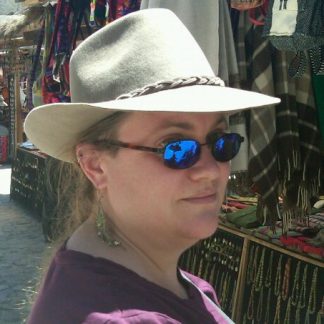
Abby Franquemont ~ Cancelled
In 1995 the mummified body of a young girl was found in Southern Peru. The body was dated to the mid to late 15th century, and incredibly well preserved, having been frozen. This girl, known as Momia Juanita, was dressed in very high quality garments which were also beautifully preserved, giving a great insight into Inca textiles. Members of The Centro de Textiles Tradicionales del Cusco (CTTC), a non-profit organization whose mission is to aid in the survival of Cusqueñan textile traditions, were given the opportunity to examine these pieces and to attempt to decipher the techniques used to make them. In 1996 the CTTC ran a competition between its member organizations to replicate the Momia Juanita's clothing (link :  https://www.textilescusco.org/blog%E2%80%93detail/weaving-competitions-2006-dress-of-the-mummy-juanita/25). Abby will tell the story of these recreations, including sharing lots of pictures of the process, showing some examples of the clothing produced, and sharing commentary from some of the people involved detailing their experiences and some of the challenges they faced.
https://www.textilescusco.org/blog%E2%80%93detail/weaving-competitions-2006-dress-of-the-mummy-juanita/25). Abby will tell the story of these recreations, including sharing lots of pictures of the process, showing some examples of the clothing produced, and sharing commentary from some of the people involved detailing their experiences and some of the challenges they faced.
Bio: Abby Franquemont is a textile crafts writer, lecturer, and educator, based in Cusco, Peru. As a revivalist of the ancient art of hand spinning with the spindle, she published her book, Respect the Spindle, in 2009. In her copious free time, Abby can be found writing a textile-themed sci-fi novel, cuddling her cat, or plotting the downfall of the patriarchy. Having successfully returned to the country of her childhood, and having her plans for textile based tourism thwarted by the pandemic, she’s now inspiring textile artists of all sorts with her innovative online courses at Franquemont University. Abby also partners closely with the master weavers of the Centro de Textiles Tradicionales del Cusco (CTTC), a non-profit organization that was established in 1996 by Andean weavers and their supporters, and sells their creations alongside her educational content on her website  https://abbysyarns.com
https://abbysyarns.com
Abby is technical, passionate, inquisitive, and informed; she has taught individuals and groups of all ages, skill levels, and combinations thereof. Her classes are among the first to sell out wherever she goes; her book, instructional DVDs, magazine articles, and blog are widely recommended; and her down-to-earth approach is empowering for students of all levels.
Abby has taught and lectured at large events including The National Needlearts Association (TNNA), Golden Gate Fiber Institute, the Spin-Off Autumn Retreat (SOAR), Sock Summit, the Taos Wool Festival, and New York State Sheep & Wool (Rhinebeck), Southeastern Animal Fiber Fair (SAFF), Fibre East in Bedfordshire, UK; not to mention many of the finest fiber, knitting, and crafting shops in the USA, along with weaving, spinning and knitting guilds nationwide and a select group of private retreats, seminars and workshops. Her writing has appeared in Spin-Off, Spindlicity, Interweave Knits, Twist Collective, Entangled, SpinKnit, Knitty, and more.
Abby's seminar will be recorded and be made available for one month to those that have registered.

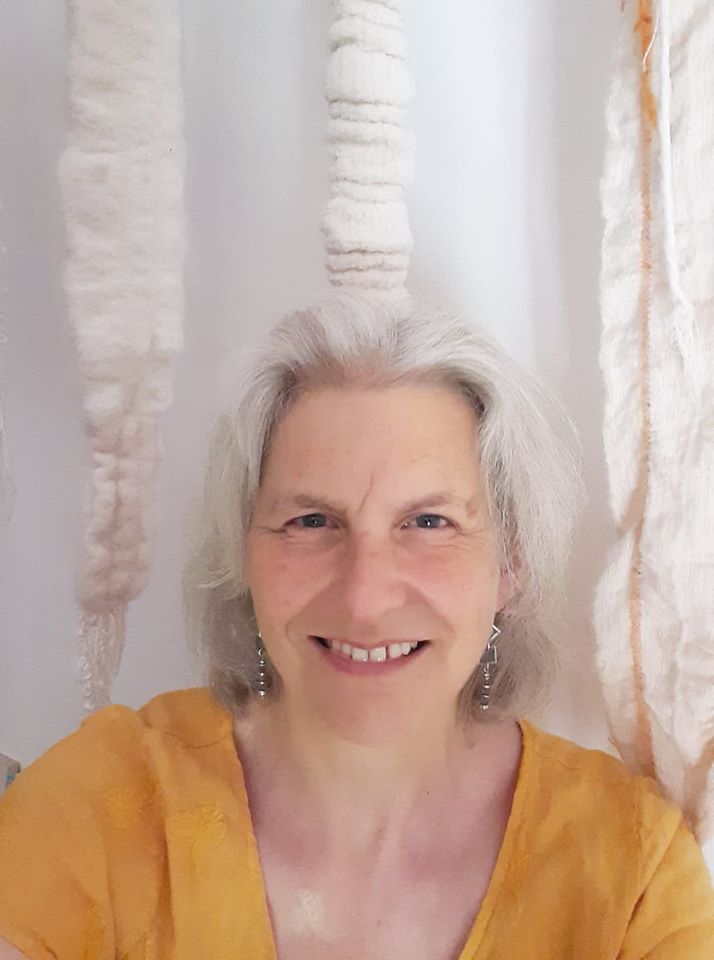
Stacey Harvey-Brown ~ June 19, 2022
Weaving as a holistic craft brings together many strands and is a metaphor for life in every culture. Stacey will talk about the three primary areas that bring her weaving life together. History – delving into archive collections; art – inspired by nature and science; and well-being – the meditative/reflective qualities of weaving – will all be explored in this presentation.
Bio ~ Stacey Harvey-Brown A weaver for 30 years, Stacey loves to explore dimensional texture, dive deep into structure and create weaving courses, books and artwork inspired by natural forms, science and optical illusions. Distilling techniques from her art into as few shafts as possible and sharing that with fellow weavers is a particular pleasure. An MA (2011-14) allowed her 3 years of investigating tubular dimensional forms and complex structural hangings. Translating optical illusions into woven form is one of her current pre-occupations, collaborating with fellow weaver Katharina Krönig.  http://www.theloomroom.co.uk/blog
http://www.theloomroom.co.uk/blog

Stacey's seminar will be recorded and be made available for one month to those that have registered.
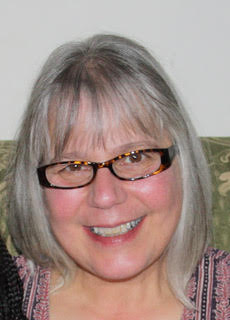
Jane Stafford ~ July 17, 2022 ~ The Weavers of Sabahar
Sabahar is an Ethiopian company that produces uniquely designed, handwoven cotton and silk textiles. Sabahar was founded 20 years ago by Kathy Marshall from Beaver Lodge Alberta.
Her passion for preserving and celebrating the rich weaving tradition of Ethiopia combined with her desire to create respectful and ethical work opportunities for marginalized people have laid the foundation for the company.
Sabahar’s 3 cores values are Sustainability, Innovation and Caring for each other. They are members of the World Fair Trade Organization.
In 2016 Kathy invited Jane Stafford to come to Addis Ababa to trouble shoot production problems the weavers had been having. It was a remarkable journey and she returned again in 2019 to set up a design department,
teaching unfamiliar weave structures to the weavers and exploring the possibilities of the yarns they have available to them, including all the Eri silk they raise in great abundance.
Jane invites you to walk through the studios of Sabahar, to meet the silk rearers, spinners, dyers, weavers and finishers of an amazing organization that now employs over 700 artisans.
Bio ~ Jane Stafford “Fabric of Life” The phrase can evoke many things. Jane Stafford has been weaving for most of her life. She has been exploring the design of cloth – the structure, the graphic, and, of course, the colour – for almost 40 years, and she sees no end to the joy of discovery. “One of the things I love about weaving is it appeals to so many different personalities – from the precise, analytical mind that loves structure and order, all the way to the wild adventurer in love with colour and expression – weaving works for everyone.”
Jane has had the great fortune to be able to earn a living doing what she loves most, weaving, and sharing her passion for excellence in cloth. Jane has been both a production weaver and a workshop instructor, helping students reach their potential across the continent, for over 25 years. She is the instructor for certified Louet dealers in North America, and is the Diva in Louet’s instructional DVDs. It is no coincidence that Jane shares her name with Louet’s latest table loom. It is an acknowledgement both for years of contributions towards loom design in general, and for the “Jane” in particular. She was the recipient of the “Teacher of the Year” award for 2014 from Handwoven magazine. Jane now teaches exclusively in her studio on beautiful Salt Spring Island, BC.
Janet's seminar will be recorded and be made available for one month to those that have registered.

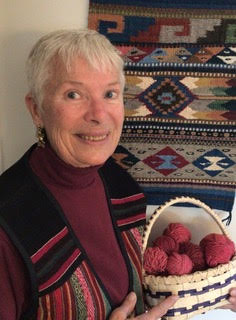
Kris Nardello ~ August 21 ~ Reds, Glorious Reds: The Cultivation and Use of Cochineal for Dye in Oaxaca, Mexico
Cochineal is a scale insect that lives on the pads of Prickly Pear Cactus (genus Opuntia) and whose body and eggs contain carminic acid, an historically important natural dye. To the Maya and Aztec people of Mexico and Central America, cochineal dyed textiles were created as early as the second century BC and dried cochineal insects were paid first as annual tribute to Montezuma in the 15th century as recorded in Codex Osuna. Second only to silver in value, cochineal was then sent back to Spain by the conquistadores after they defeated this powerful ruler. Spain maintained a monopoly on this magnificent red dye source for several hundred years. Carmine, a dye and pigment produced from cochineal, was used to dye Catholic cardinals’ robes and the uniform jackets of English Redcoats.
Having dyed with imported cochineal for years before traveling to Oaxaca, Mexico, for the 10th International Shibori Symposium in 2016, Kris was particularly interested in seeing cochineal being raised commercially on a farm south of the city. In nearby Teotitlan de Valle, a Zapotec town famous for its handwoven rugs, those weavers using natural dyes often include shades of orange, red, pink and purple produced by cochineal insects in their rugs.
Take a virtual trip to a Mexican cochineal farm to learn more about the history and use of these amazing (female!) insects and see examples of the rugs that glow with the cochineal dye colors.
Bio ~ Kris Nardello
Blending advanced degrees in both art and science education, dyer, weaver, spinner, quilter and retired middle school teacher, Kris is often found foraging for native California plants and mushrooms for her natural dye pots. The dyed yarns are used for weaving small tapestries and rugs using traditional Scandinavian patterns as well as knitted garments. The indigo-dyed shibori and eco-printed fabrics are used for boro stitched bags, pieced quilts, garments and fabric collages. She has studied Zapotec rug techniques and symbology with Porfirio Gutierrez and works in Martha Stanley’s studio with 5 other weavers. Kris is currently the secretary of the Santa Cruz Textile Arts Guild, part of the Northern California Handweavers Guild.
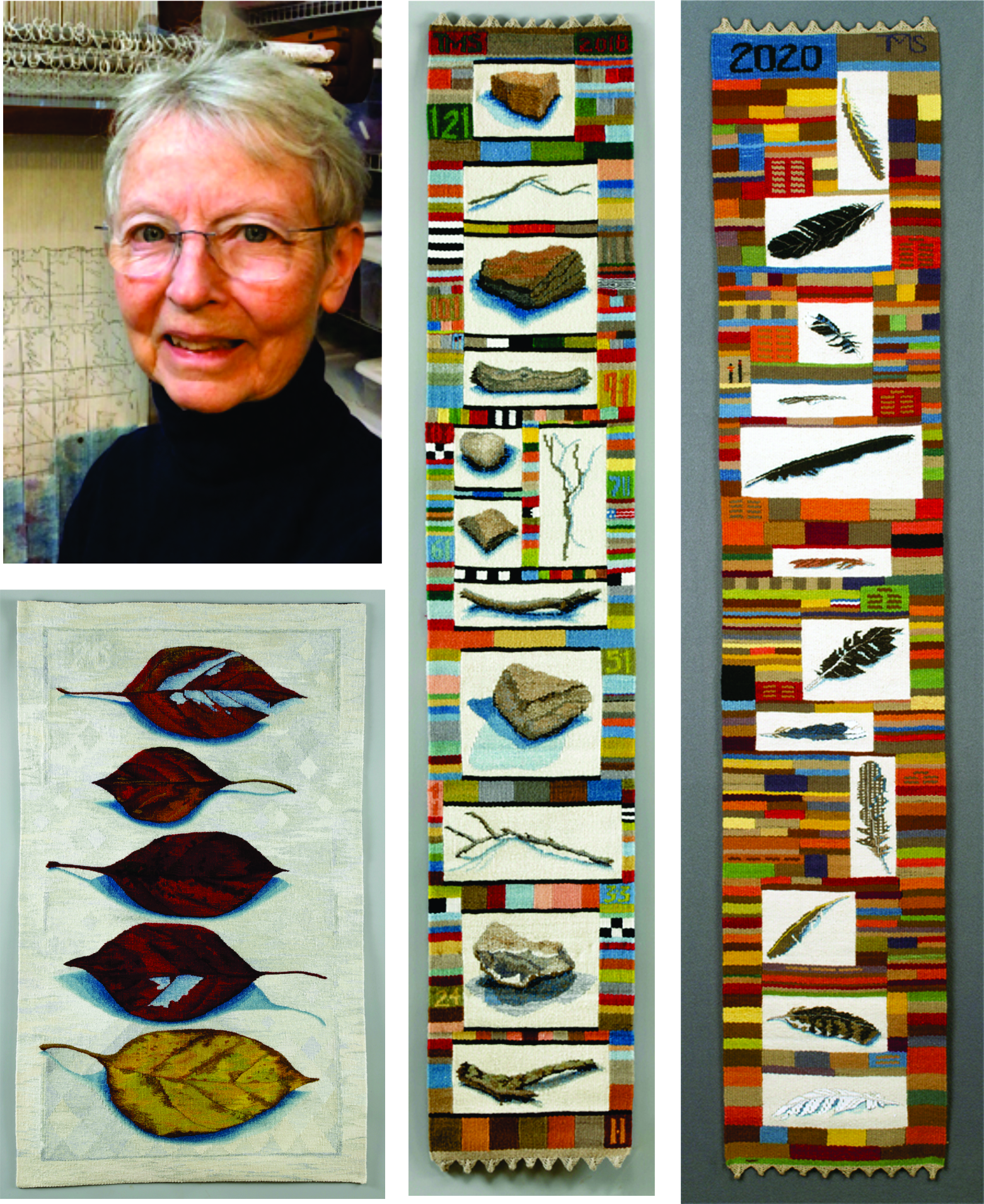
Tommye Scanlin ~ September 18th ~ Creating Woven Images
In the talk I will describe my journey to find my chosen method for creating woven images, one that led me to tapestry weaving. In addition to several other tapestries, I'll show the "tapestry diaries" I've been doing as a daily practice since 2009.
Bio ~ Tommye Scanlin is Professor Emerita at the University of North Georgia, Dahlonega, USA where she began the weaving program in the early 1970s. She explored different ways to create imagery with weaving until at last embracing handwoven tapestry as her medium of choice three decades ago. She is the author of The Nature of Things: Essays of a Tapestry Weaver and Tapestry Design Basics and Beyond: Planning and Weaving with Confidence.
Tommye's seminar will be recorded and be made available for one month to those that have registered.

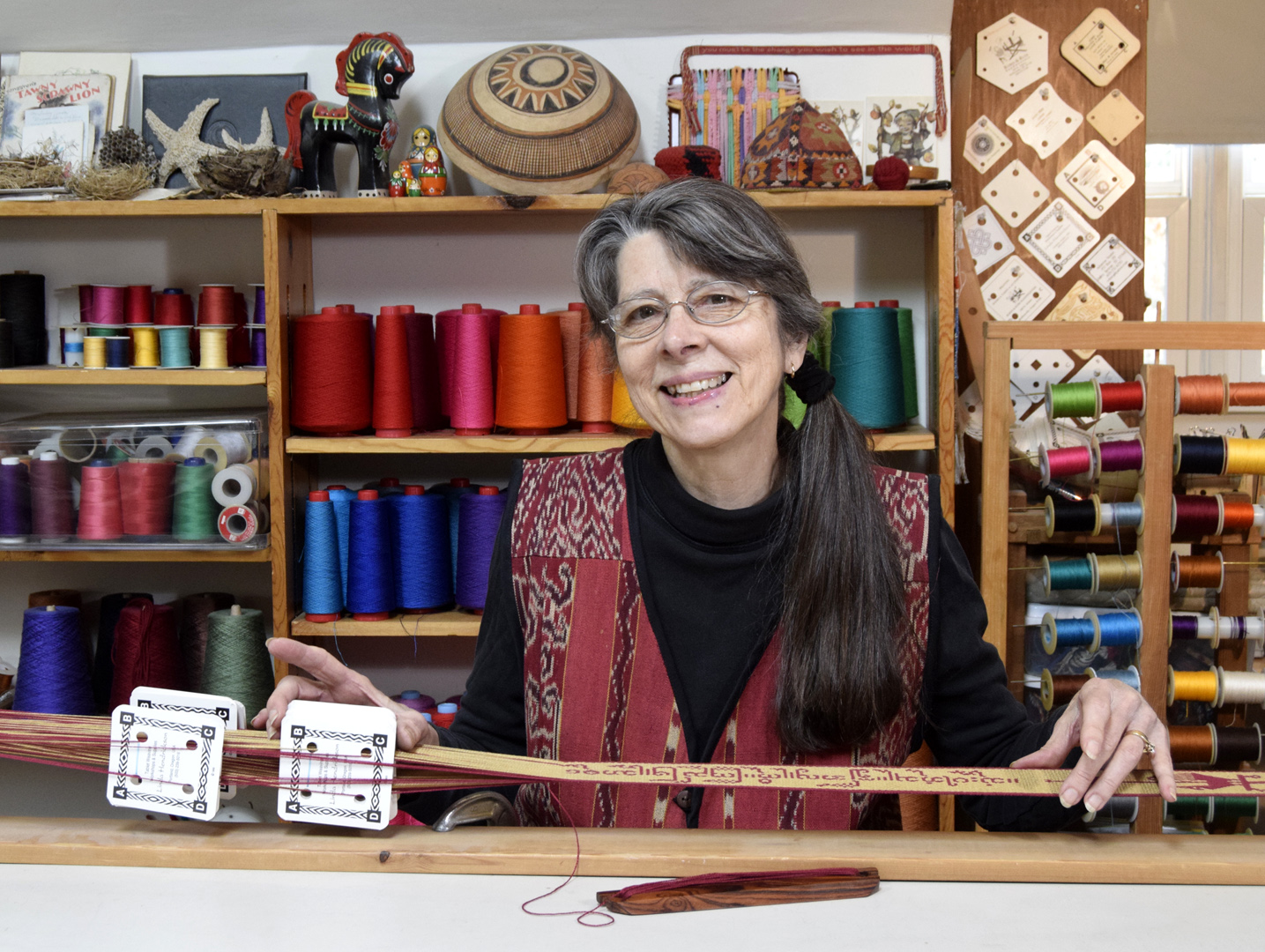
Linda Hendrickson ~ October 16th ~ Tablet-Woven Calligraphy
In 1991, Linda taught herself tablet weaving from Mary Atwater’s book Byways in Handweaving. As she started looking at books on tablet weaving, she was drawn to a few examples of elaborate and flowing woven text. These included verses from the Koran in a Persian silk band, and a yards-long cotton ribbon from Burma used to wrap Buddhist palm-leaf manuscripts. In contrast, the examples that she found of tablet-woven text in Roman letters appeared rather crude and blocky. She decided to do something about this, and in 2003, self-published Please Weave a Message: Instructions and Graphs for Tablet-Woven Calligraphy. Linda worked with a calligrapher on the designs of the letters for the historic scripts and fonts in the book, and she and her husband had fun coming up with original pangrams to illustrate the letters. More recently, she was asked if she could teach a class in weaving Hebrew for a local synagogue. Rather than starting completely from scratch this time, she converted a cross-stitch aleph-bet to a tablet weaving graph, and then worked with a calligrapher on improving the letter shapes. In addition to her original work, Linda has also graphed and woven reproductions of text and designs from a Burmese tablet-woven manuscript binding ribbon called sazigyo. She will share images from all of this work, as well as holding up bands to the camera. There will also be a few slides from trips that she made to Thailand and Myanmar to promote a greater understanding of the techniques used to weave these bands. 2014, Linda went to Bangkok, Thailand, to demonstrate tablet weaving at the book launch party for Ralph Isaacs’ book Burmese Manuscript Binding Tapes: Woven Miniatures of Buddhist Art, and in 2017, she went to Yangon and Mandalay, Myanmar, to assist weavers attempting to revive the techniques for weaving sazigyo.
Bio ~ Linda Hendrickson has been weaving since 1984, and teaching since 1992. She is devoted to studying and advancing two ancient and somewhat obscure techniques, tablet weaving and ply-split braiding. An enthusiastic and patient teacher, she has presented workshops, lectures, and demonstrations in the US, Canada, Mexico, England, Thailand, and Myanmar. She is the author of several self-published books including Please Weave a Message and How to Make Ply-Split Baskets, and has also written dozens of articles for fiber magazines. Linda and her husband, John Brockway, work together to provide tools and supplies for tablet weaving and ply-split braiding, and have produced many instructional videos for Linda’s YouTube channel. In addition to her passion for fiber arts, Linda is a Taoist Tai Chi practitioner, a whole food plant-based cook and enthusiast, and a climate activist volunteering with groups advocating for a shift to climate-friendly food.
 http://www.lindahendrickson.com/
http://www.lindahendrickson.com/
 https://www.youtube.com/lindahendrickson
https://www.youtube.com/lindahendrickson
Linda's seminar will be recorded and be made available for one month to those that have registered.
| |
Past Seminars 2021
| |
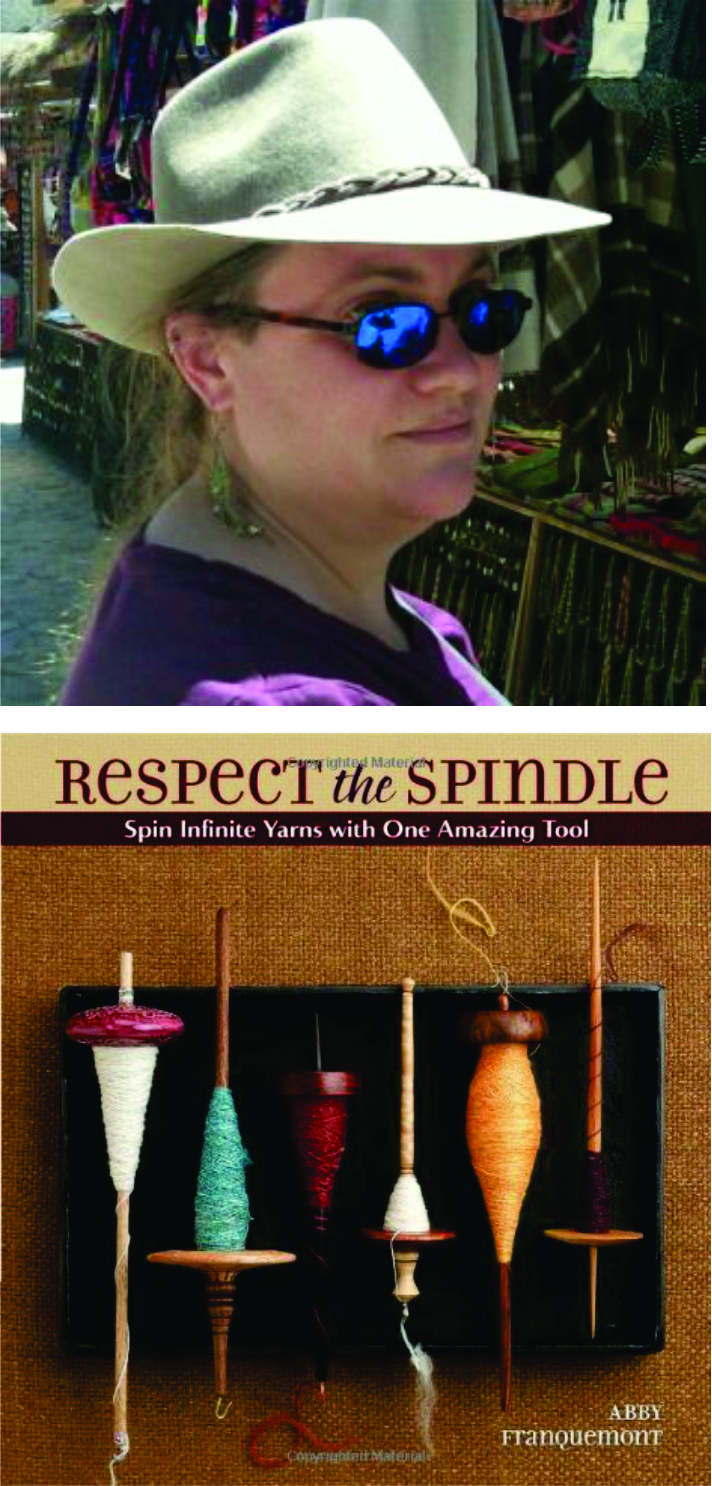
Abby Franquemont ~ January 17th ~ Preserving Textiles Traditions in the Andes
Abby Franquemont is known for her book Respect the Spindle and working with the spinners and weavers of Peru. In this seminar she will talk about the textiles of the indigenous people of the highlands from her home in Ollantaytambo, Peru.
Abby will take questions when the presentation is done.
Bio ~ Abby Franquemont, author of bestselling spinning book Respect The Spindle, is steeped in the fiber arts since birth. The daughter of field anthropologists studying textile production, she was raised largely in the rural Andes of Peru, where she learned to spin, weave and more starting at the age of five. In 2006, she left a successful career in information technology in order to write and teach full-time about the fiber arts, particularly spinning. Why spinning? Abby says it's the most fundamental of the fiber arts – the one upon which the most others depend – as well as the most at risk of being lost a nd the hardest to pass down in any way other than hand to hand.
Abby is technical, passionate, inquisitive, and informed; she has taught individuals and groups of all ages, skill levels, and combinations thereof. Her classes are among the first to sell out wherever she goes; her book, instructional DVDs, magazine articles, and blog are widely recommended; and her down-to-earth approach is empowering for students of all levels. Abby has taught and lectured at large events including The National Needlearts Association (TNNA), Golden Gate Fiber Institute, the Spin-Off Autumn Retreat (SOAR), Sock Summit, the Taos Wool Festival, and New York State Sheep & Wool (Rhinebeck), Southeastern Animal Fiber Fair (SAFF), Fibre East in Bedfordshire, UK; not to mention many of the finest fiber, knitting, and crafting shops in the USA, along with weaving, spinning and knitting guilds nationwide and a select group of private retreats, seminars and workshops. Her writing has appeared in Spin-Off, Spindlicity, Interweave Knits, Twist Collective, Entangled, SpinKnit, Knitty, and more.
Abby's seminar will be recorded and be made available for one month to those that have registered.
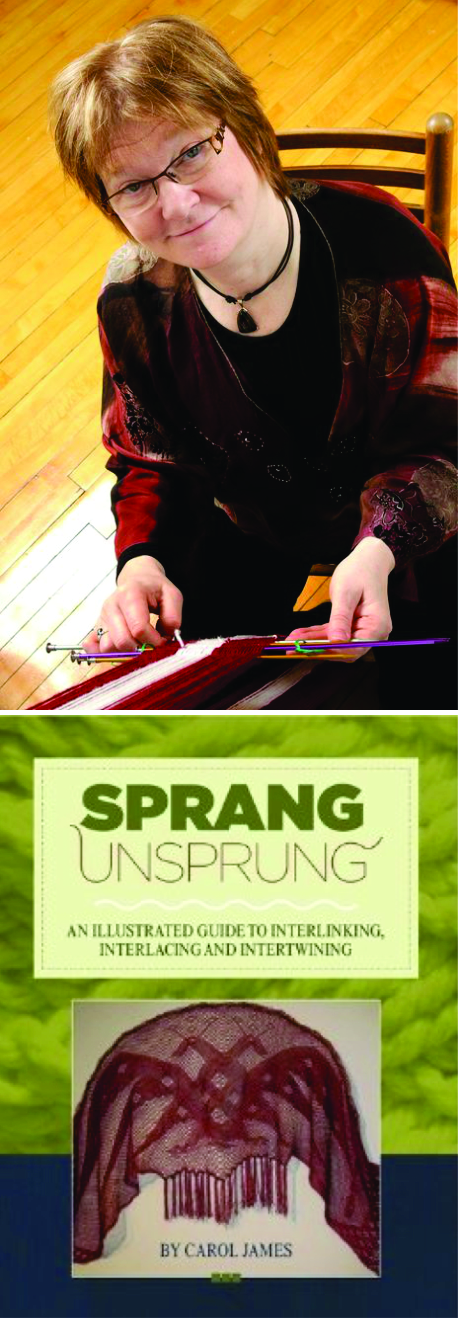
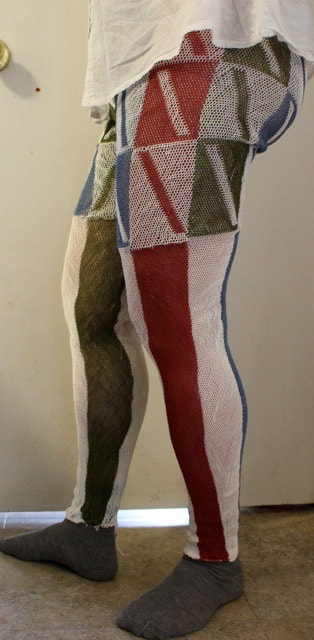 Carol James ~ February 7th ~ Sprang
Carol James ~ February 7th ~ Sprang
Carol James has studied a number of textile arts including the finger woven sashes so well known in Canada, and sprang, which lends itself to more complexity than one might think. In this seminar she will share her explorations in sprang and discuss ways in which it has been used throughout history.
Mostly my presentations are in 3 parts. 1- I begin with an introduction to sprang, a definition, and on a small frame using thick cord. I then give a few examples illustrating some basic ways this could be made into a garment. 2- sprang in history. The story is told using photos I’ve taken in various museums, replicas I’ve made, and artwork (pottery, paintings, woodcarvings) that are evidence of sprang in history from the Bronze Age to the present. 3- sprang leggings, the step-by-step process, how I made them.
Bio ~ Carol James has been exploring sprang for more than 20 years, examining items in collections across North American and Europe, and making replicas. She has worked for clients such as George Washington’s Mount Vernon, the German Archaeological Institute, and Norwegian Army Museum.
She has developed a pattern-writing system to accommodate the variety of designs encountered in her sprang
explorations. An excellent instructor, she is the author of numerous articles, two DVDs and three books: Fingerweaving Untangled and Sprang Unsprung and a new book of Sprang Lace Patterns.
Carol's seminar will be recorded and will be made available for one month to those that have registered.
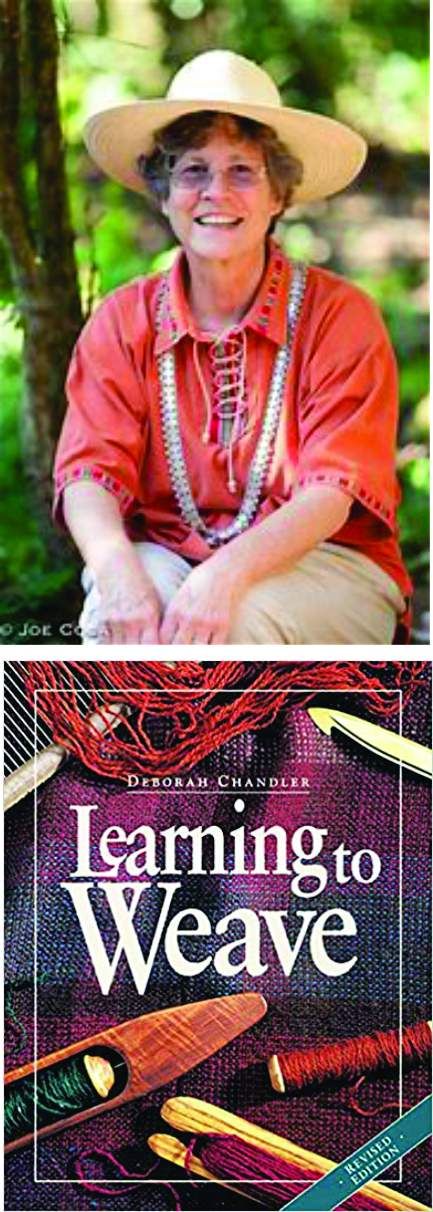
Deborah Chandler ~ March 7th ~ Weavers of Guatemala and Weave A Real Peace (WARP)
Deborah Chandler is known for her book Learning to Weave which has been used by so many as a basic introduction to the craft of weaving. Deborah has also worked with weavers in Central America and will be speaking from her home in Guatemala. She will also talk about Weave A Real Peace (WARP) a non-profit organization she has been involved with since its inception.
Bio ~ Deborah Chandler In 1984, under the name Debbie Redding, Deborah wrote Learning to Weave, a beginning weaving text that has been in print for more than 30 years now. In 1989 she went to Honduras with the Peace Corps, then spent four years in Houston being inducted into Fair Trade. Since 1999 she has been a resident of Guatemala, a country with one of the richest textile traditions in the world. She was the Guatemalan Director of Mayan Hands for nine years, a fair trade organization that has worked with hundreds of Mayan women weavers for more than 25 years. During that time she and Ray Senuk co-authored Guatemalan Woven Wealth - Preserving a Rich Textile Tradition, a volunteer effort by a team of "book people" in support of Friendship Bridge, a micro-credit ngo that works in Guatemala. Retiring from Mayan Hands opened up the time to work with Teresa Cordón researching and writing Traditional Weavers of Guatemala - Their Stories, Their Lives, a wonderful and rewarding project. Teresa Cordón, born in Zacapa in the eastern part of Guatemala, has worked with Mayan artisans for much of her adult life, providing them with both work and educational opportunities. Since 1990 her "day job" has been working with K'iche' men who create traditional palm leaf hats that are eventually sold through SunBody Hats in Houston. Teresa has always been an exceptional writer, but this is her first foray into writing a book. It's about time.
Deborah's seminar will be recorded and will be made available for one month to those that have registered.
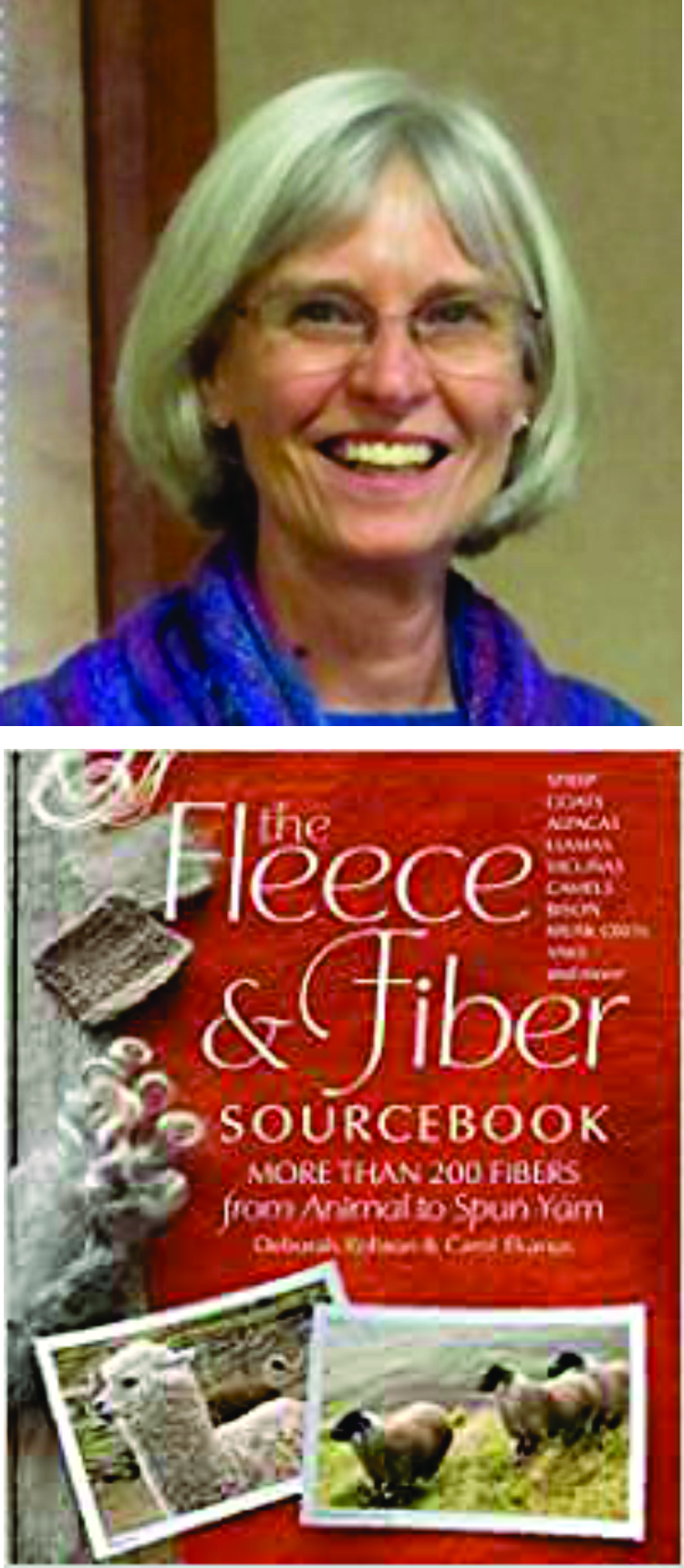
Deborah Robson ~ April 11th ~ Shetland Textiles
Spinners know Deborah for her extensive involvement in spinning and fibre research, as an editor and author. She will discuss Shetland textiles from her home in Colorado. She will take questions after the presentation.
Bio ~ When I began spinning in the 1970s, prepared fiber wasn’t available, so I learned by using raw wool and immediately became interested in the different breeds of sheep and the types of fleeces they grew. Not too long after that, I noticed that the breeds of sheep that most handspinners valued above others were listed as "at risk of extinction" by the livestock conservation groups. I became alarmed.
Bio ~ Deborah Robson I worked as an editor of textile books and magazines, which fed not only my family but my
curiosity. My questions about all types of wools intersected with my interest in the rare breeds, and I discovered that the answers I wanted weren’t available. So I started researching. And then researching even more. Lincoln led to Navajo-Churro, which in turn led to Norfolk Horn, which resulted in the Save the Sheep project sponsored by Interweave Press. Then I had questions about mohair and cashmere and yaks and paco-vicuñas and pygoras. In a fit of brilliance or insanity, I spent four years spinning every fiber-grown-by-an-animal that I could get my hands on, and working with Carol Ekarius to write The Fleece and Fiber Sourcebook: More than 200 Fibers from Animal to Spun Yarn. Interweave asked me to record a set of instructional DVDs called Handspinning Rare Wools. People started asking me to teach workshops. I went to Scotland and got to spend time with super-wonderful people and meet sheep I’d only seen in photos. The whole thing has taken off, and I’m going with it because I get to share all the cool stuff I’ve learned, and I get to discover even more questions and some of their answers.
Deborah's seminar will be recorded and will be made available for one month to those that have registered.
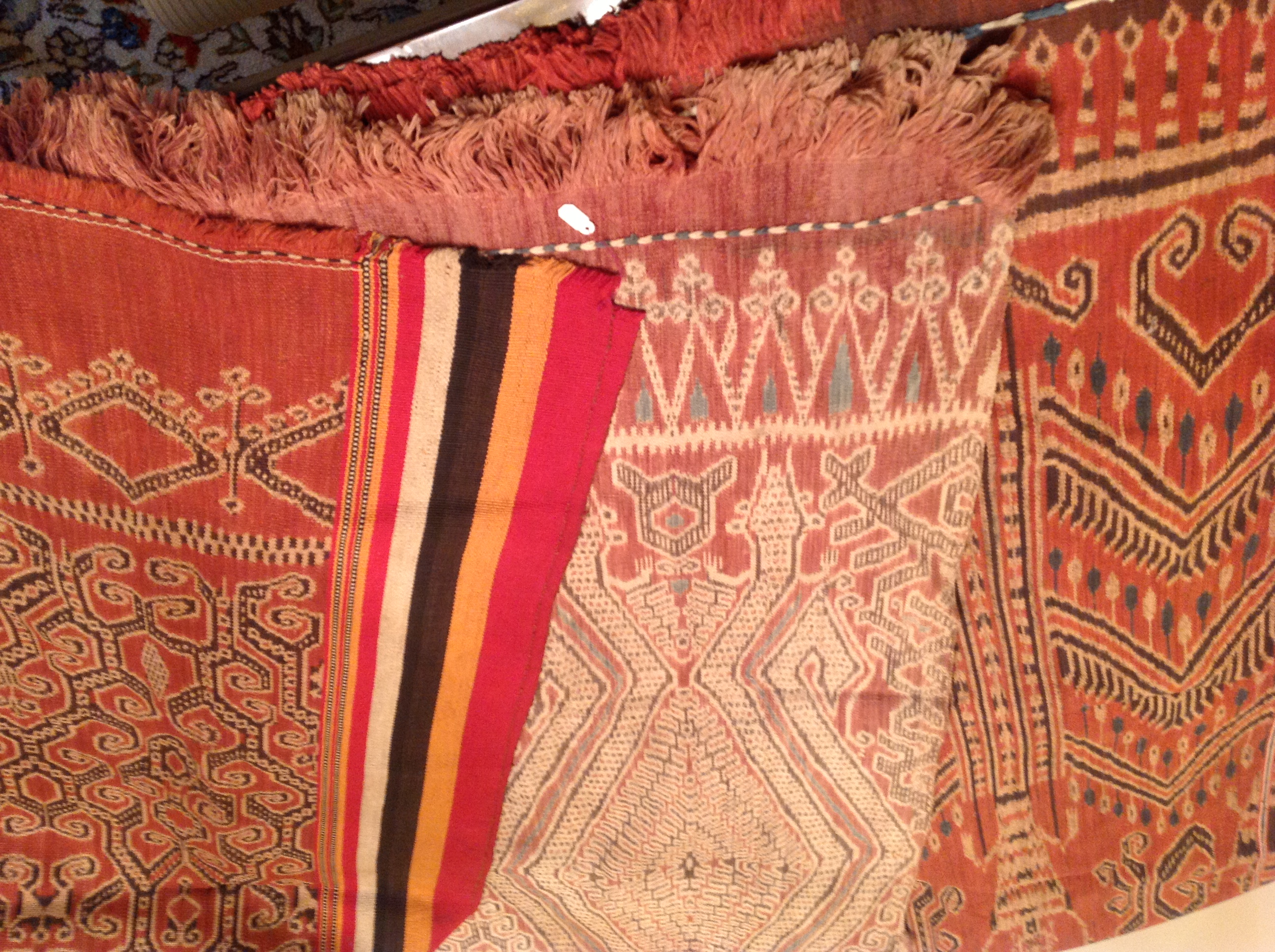
Winnie Nelon ~ May 16th ~ Iban Textiles from Borneo
The Iban have a long heritage of using intricate, complex and powerful designs on their plaiting and weaving. Their textiles traditionally were integral in ceremonies providing the protection, support and harmony needed for the dangerous and challenging world of tribal rivalry. Only very experienced weavers could produce the most powerful patterns without risk to themselves and consequently were ranked as equals to men who had succeeded in headhunting. This talk will explore the history and techniques behind the creation of these textiles which were made on simple backstrap looms.
Bio ~ Winnie Nelon spent almost a third of her banking career in Asia where she developed a passion for traditional S.E. Asian textiles. She was co-chair of the Textile Society of Hong Kong, coordinated the TSHK newsletter for many years and also coordinated the publication of two editions of The Guide to Asian Textile collections.
Since retiring she has learned to weave and is active with the Manasota Weavers Guild in Florida. She has spoken about textiles in her collection to weaving guilds, college seminars, conferences and Asian art organizations. She currently lives in Longboat Key, Florida and Woolwich, Maine.
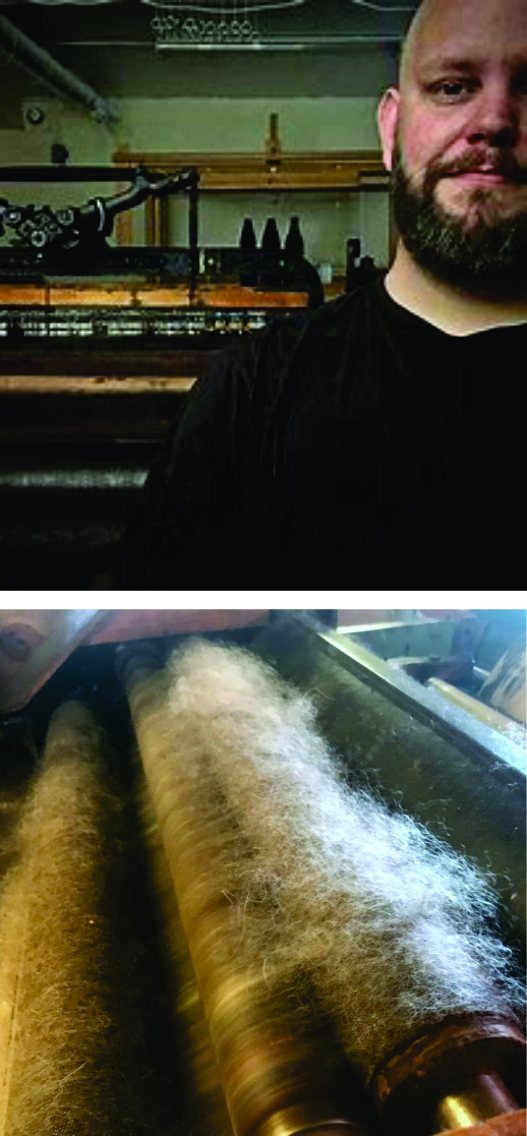
Stefan Moberg ~ June 13th ~ Swedish wool and Hattersley looms
The types of wool found in Scandinavia have a long history and connections to the types of wool used by the Vikings. There are some unique types of wool which are hard or even impossible to find in other places of the world. Stefan Moberg has worked with these unique sheep breeds to develop a Swedish tweed, utilizing their specific characteristics and traits. The Hattersley domestic loom was introduced on the market around the turn of the century 1800/1900. It is a semi-automatic loom made from cast iron and powered by foot pedals. It has a strong connection to Harris Tweed and is still used in the Outer Hebrides to weave this world famous fabric. Come and hear the story of how to develop a yarn from scratch and how one of the Hattersley looms of the Outer Hebrides moved to Sweden, and is now living in the suburbs of Stockholm.
Bio ~ Stefan Moberg is a hand weaver and spinner, with deep roots in the Swedish textile industry and traditions. As a weaver Stefan’s primary focus is working with wool, which has led to developing a tweed yarn and fabric made from the unique types of wool you only find in Scandinavia. As a teacher Stefan is in demand in both Sweden and internationally and is also published in both VÄV magazine, Handwoven and The Wheel. Stefan also owns and operates the only privately owned Hattersley domestic loom in Sweden.
Due to the 9 hour time difference this seminar is scheduled for 11:00 AM Pacific Time.
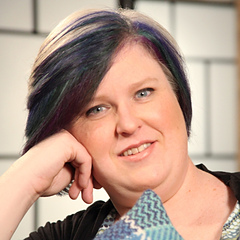
Janet Dawson ~ July 11th ~ Textile Travels in Turkey
In 2014, I spent three weeks traveling with other weavers through western Anatolia. We visited big cities and tiny villages, and everywhere we went we found weavers at work. Come with me on a photo journey of weaving in Turkey: of ancient Ottoman looms, of industrial mills in small mountain villages, and of several modern day handweaving studios. This slide show also includes a photo documentary of the three days we spent in a small village dokuma (weavery), learning their practices and methods.
Bio ~ Janet Dawson learned to weave at the Cape Breton Centre for Craft and Design in 1994 and taught the weaving program there from 2000 to 2009. She teaches across the US and Canada and has almost 6000 students in her Floor Loom Weaving class at Craftsy.com. In addition to her own weaving business, The Weaver’s Palette, Janet owns The Bobbin Tree, a store catering to weavers, spinners, knitters and felters.
Janet’s focus has swung from complex weaves to simple cloth and back again over the years. Her current passion is for teaching the mechanics of cloth: understanding and communicating the actual structure of weaving structures. She has a rare knack for communicating complex ideas in ways that are easy to comprehend, and her favourite thing is witnessing that moment of understanding when things click for students for the first time.
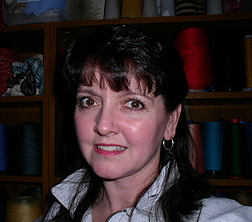
Robyn Spady ~ August 15th ~ Passementerie - Textiles That Trim
Bio ~ Robyn Spady learned to weave in 1969. She completed the Handweavers’ Guild of America’s Certificate of Excellence (COE) in 2004 with the specialized study Loom-controlled Stitched Double Cloth. Robyn is fascinated by the infinite possibilities of crossing threads and loves coming up with new ideas to create fabric and transform it into something new and exciting. She is committed to turning the weaving world on to double-faced fabrics, four-shaft weaves, uncommon and advanced weave structures, and passementerie techniques. Robyn is also the founder and editor of Heddlecraft magazine.
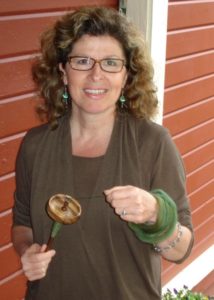
Diana Twiss ~ September 19th ~ The Urban Farmer, Growing and Processing Linen
Bio ~ Diana Twiss is an experienced fibre arts instructor with a background in adult education and fine art. Passionate about fibre, colour, and texture, she has introduced many beginners to the wonders of making yarn and has helped experienced spinners experiment with technique, colour, and fibre to take their spinning to a new level. In addition to spinning for the last 16 years, she is a self-described “fearless knitter” and is currently working on a variety of projects.
Diana has a deep curiosity about how fibres, colours and techniques all work together to make unique yarn, and translates this into accessible, interesting and fun classes. She lives in the countryside outside of Vancouver, BC; grows flax for linen, flowers for her dye pot, and basil and garlic for the best pesto in the valley.
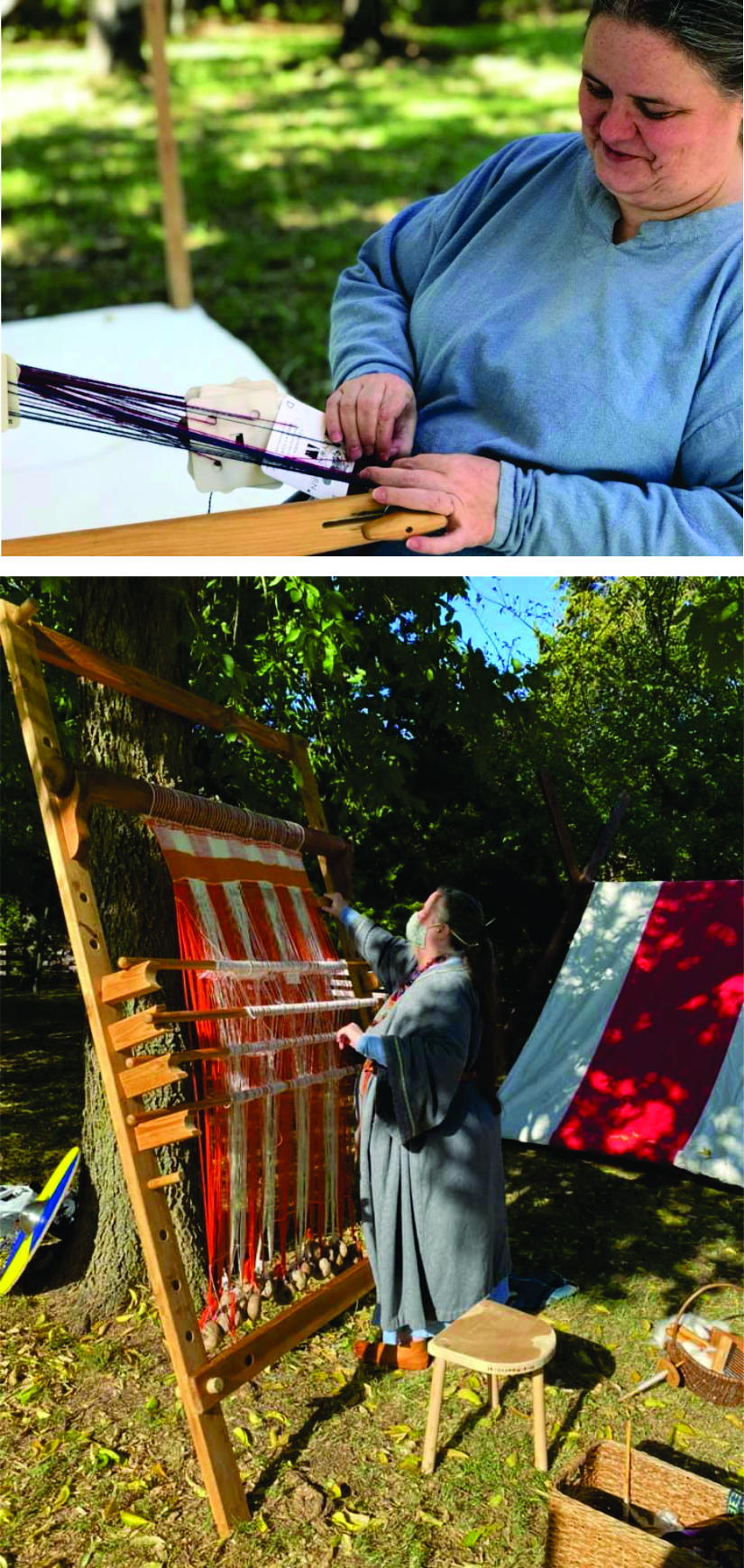
Christina Petty ~ October 17th ~ The Earliest European Looms: The History, the Stories, the Techniques
Weaving is one of our earliest technologies. The craft informs our language, our stories, and our oldest myths. From the Fates and the Norns, Penelope, Beowulf, Joseph’s Coat of Many Colors, and a coat made without seams, looms are integral to our stories. Find out why things loom over us and how warped we really are. Join Christina Petty weave a tapestry of stories as we examine how textiles, early technologies, and tales relate together.
Bio ~ Christina Petty has a Master's of Philosophy from the University of Manchester, UK
I have been consulted on the weaving of the Shroud of Turin and written a museum exhibit for the British Museum and York Archaeological Trust. My thesis has several thousand downloads and has been read by people in several countries. I lecture for clubs and educational groups frequently.
Further research questions involve investigating a set of archaeological finds that are not textile tools (as currently identified) to discover what they might be used for; why modern warp-weighted weavers only set up the loom one way, when archaeology suggests multiple options; and how Victorian Era scholars still influence modern scholarship. I also want to organize studies for all textile tool finds for early medieval Britain, as no such study yet exists for even a single county.
